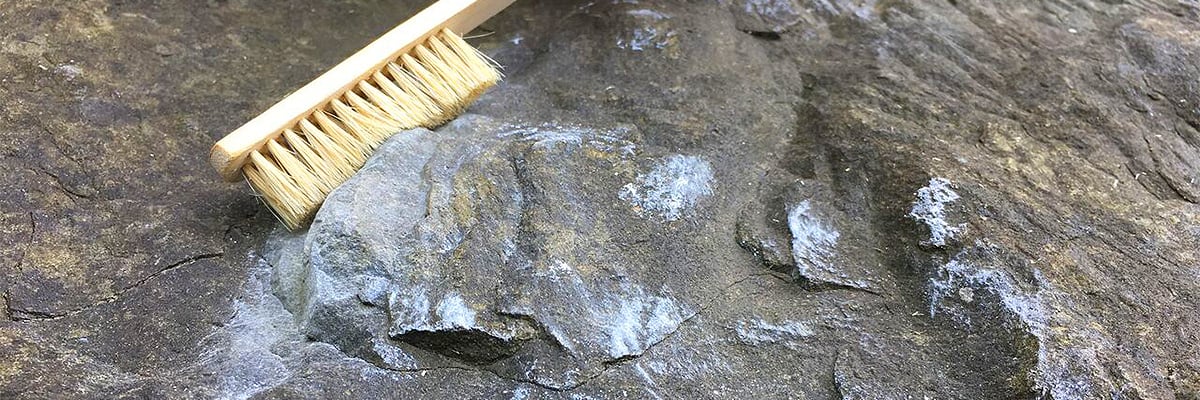
I remember when North East climber and photographer, Mark Savage, sent me a photo of the damage done to the classic Bowden problem 'Vienna'. The damage is obviously due to it's popularity and 'Vienna' is certainly not unique in this respect.
There will be classic problems all over the country which are sadly changing for the worst. One of the causes of this damage is from excessive brushing to remove excess chalk so as to improve the grip between fingers and rock. We all do it and its almost become a ritual, part of the mental process of preparing for a hard send. However it's worth questioning how effective this process is, is it worth the damage it causes and are there better alternatives for improving the friction and therefore your chances of success?
I have done plenty of brushing in my time and my company even sells brushes, but in most cases I don't actually believe it does help to improve the friction. The only cases where it might help, are where the hold obviously hasn't been brushed for a long time and is really caked in chalk. In my experience, this is not often the case and holds generally are pretty clean. If the hold is relatively clean, and by clean, I don't mean free of chalk, I just mean free of large particles of chalk or layers of chalk then brushing is unlikely to provide any advantage other than a psychological one.
I certainly don't see how it will dry out the hold and remove moisture, which is really what you want. Therefore in most cases, I would say brushing is pretty much a waste of time and the benefit will be far outweighed by the long term damage you will do to the rock. Even if you are dealing with hard rock types which aren't easily damaged, at the very least the hold will become polished over time. You can see polished holds everywhere and although I am not saying that brushing is the cause of this polish, it's certainly a contributing factor and should be avoided where possible.
Where it is necessary to brush a hold, it should be done sensitively, gently, in moderation and with a soft natural bristle brush.
Years ago there was a huge controversy over a front cover photo of me climbing Brad Pit at Stanage with a pof on the ground below me. For those of you who dont know, a pof is a French invention from the forests of Fontainebleau. It's basically a rag filled at one end with pine resin. Once constructed you end up with a round ball of pine resin at one end and a long loose tail of material at the other. The French used to pof the resin onto their hands, rubber and the holds, then use the tail end to whack away the excess and aerate the hold. Some would then use chalk on their hands, others would do without the chalk. I tried all combinations and really didn't like it, so I stuck to chalk. The British didn't like the resin and the French didn't like the chalk and on more than one occasion, whilst using chalk in the forest of Fontainebleau, I was subjected to a wagging French finger and the words "Non, non, non!" Over time I think the French realised that actually chalk was better than resin and it's now very rare to see anyone using a pof. Anyway, when British climbers saw me climbing on the Peak grit with a pof they were rightly up in arms. Having seen the damage that resin had done in Fontainebleau, I couldn't agree more, however, although there was resin in my pof I wasn't using the resin part of the pof just the tail end to whack the holds. This has a similar effect as brushing but is in my opinion much more effective and does far less damage. The force of air generated by the tail end of the pof has the same effect as wind drying out and cooling the holds and thus improving the friction. Neither of these effects is achieved through brushing. I am certainly not advocating the use of a resin pof but there might be many benefits in replacing the resin with chalk and the brush with the new chalk pof.
If you are missing brushes from your climbing arsenal and if you NEED them, think MoonClimbing...


